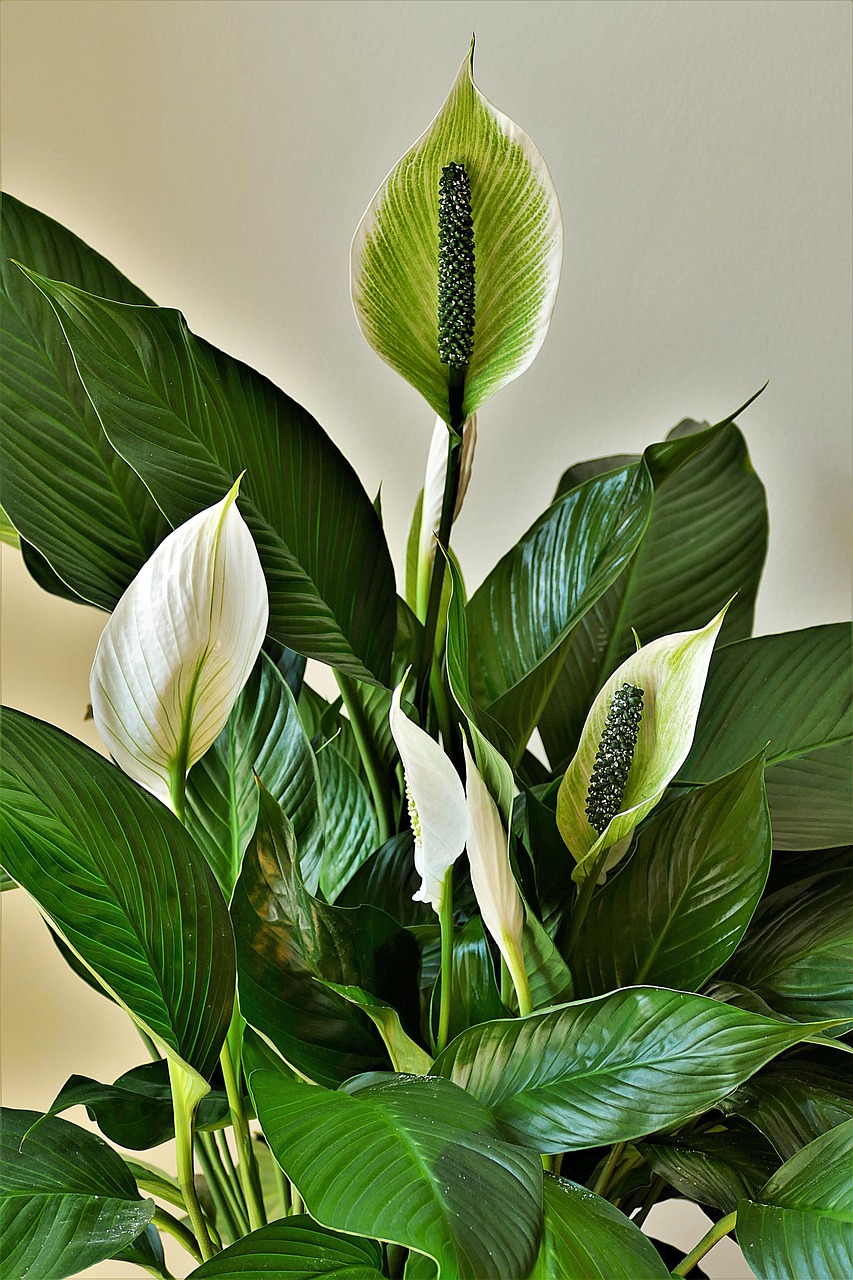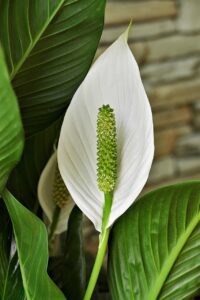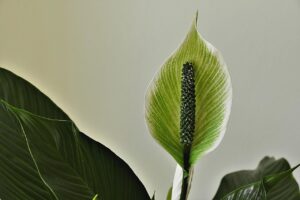Peace Lily
Overview
The Spathiphyllum wallisii, commonly known as Peace Lily, is a tropical plant valued for its lush foliage and pristine white spathes. It excels indoors in indirect sunlight and requires a warm, humid atmosphere, mimicking its forest floor origins. With benefits including air purification, this ornamental beauty is low-maintenance, adaptable, and a perfect addition for gardeners seeking a touch of tranquility.

Characteristics
Known for its glossy green leaves, unique white spathes that resemble flowers, and air-purifying qualities.
Region
Central America.
Natural Habitat
In the wild, it is found on the forest floor in tropical rainforests.
Cultivation
Prefers indirect sunlight, needs moist soil without being waterlogged, and thrives in warm, humid conditions.
Uses and Benefits
Peace Lilies, or Spathiphyllum wallisii, offer a serene touch to indoor spaces with their glossy leaves and distinct white blooms, and come with a host of benefits:
- Air Purification: Known for filtering indoor air, they can absorb harmful toxins like benzene, formaldehyde, and trichloroethylene3.
- Visual Appeal: Their lush foliage and graceful flowers add a decorative element to homes and offices.
- Adaptability: They are low maintenance and can thrive in a variety of light conditions, making them ideal for beginners2.
- Humidity Enhancement: Peace Lilies can help maintain a healthy level of indoor humidity, which can be beneficial for respiratory health1.
Adding a Peace Lily to your living space not only enhances its beauty but also contributes to a healthier environment indoors.

Cultivation Tips
To cultivate a thriving Spathiphyllum wallisii, consider these key tips:
- Choose a warm and humid spot reflecting its native tropical environment5.
- Provide bright, indirect sunlight to prevent the leaves from scorching2.
- Keep the soil consistently moist, but be cautious not to overwater it1.
- When the leaves droop slightly, it’s a good indicator that the plant needs water3.
- Growth is optimal in light rooms and may encourage more flowering2.
- For repotting, ensure each segment has at least two leaves and roots attached1.
Remember that while the Peace Lily is low-maintenance, the balance of light and watering is crucial for its full potential growth and air-purifying properties3.
Seasonal Considerations
Peace Lilies, or Spathiphyllum wallisii, thrive throughout the year if their tropical preferences are met. Seasonal changes, particularly in temperate regions, can warrant special attention to keep your Peace Lily flourishing:
- Ensure the plant is kept away from drafts and sudden temperature changes as the seasons transition4.
- During colder months, reduce watering frequency and ensure that indoor heating doesn’t dry out the air too much, as humidity is critical for the plant’s health5.
- Rotate the plant occasionally to ensure evenly distributed light exposure, especially when daylight hours wax and wane with the seasons2.
- As seasons change, be mindful of light intensity; Peace Lilies prefer indirect light and may need to be moved to avoid direct sun rays, especially in summer5.
While there may not be specific seasonal considerations from the sources provided, these measures can maintain a balance that mimics the Peace Lily’s natural environment all year round.

Issues and Troubleshooting
- Peace Lilies should not sit in direct sunlight, which could cause leaf scorching.5
- Yellowing leaves may indicate overwatering or poor drainage.1
- Wilting can occur from both underwatering and overwatering; allow the soil to dry slightly between waterings.3
- Brown leaf tips may suggest low humidity or excess fluoride in water; use filtered water if necessary.1
- If the plant stops producing flowers, provide brighter indirect light to encourage blooming.2
- Regularly trim dead or yellowing leaves to promote new growth and maintain plant health.3
History and Folklore
The Spathiphyllum wallisii, commonly known as the Peace Lily, intertwines with a rich tapestry of myth and symbolism despite the absence of extensive historical documentation. This plant is often associated with tranquility, purity, and the rebirth of the soul, embodying sentiments of peace. Its white spathes are thought to resemble a white flag, universally recognized as a ceasefire signal, which might explain the ‘Peace’ in its common name. Given as a gift, it conveys a deep sentiment of hope and the wish for harmony. Across cultures, the Peace Lily is a favored memorial plant, believed by many to ease the passage of loved ones and bring comfort to the bereaved.
References
1. “How to Grow and Care for Peace Lily Plants – The Spruce”, https://www.thespruce.com/grow-peace-lilies-1902767
2. “Peace lily care: how to grow peace lilies successfully – Homes & Gardens”, https://www.homesandgardens.com/gardens/peace-lily-care
3. “Best Peace Lily Care Tips + How to Grow Spathiphyllum Indoors”, https://balconygardenweb.com/peace-lily-care-plant-growing-tips/
4. “How to grow peace lily – BBC Gardeners World Magazine”, https://www.gardenersworld.com/how-to/grow-plants/how-to-grow-peace-lily/
5. “How to Grow and Care for Peace Lily – Better Homes & Gardens”, https://www.bhg.com/gardening/plant-dictionary/houseplant/peace-lily/
Nicolas Duval
Nicolas is a passionate advocate for nature and the art of wildcrafting. His dedication shines through in Wildcraftia, a website he meticulously crafted to serve as a haven for nature enthusiasts worldwide. Driven by a deep appreciation for nature’s connection to humanity, Nicolas embarked on his journey in 2011 with SmokableHerbs, a platform showcasing his love for nature’s bounty. Building upon this foundation, he established Smokably, a thriving online store offering premium herbs and blends to a global audience.
